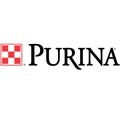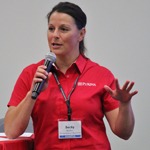 Think about managing a swine facility. Chances are you imagine pens of healthy pigs, dedicated employees and livestock industry leaders. You likely didn’t think of Mount Everest – until now.
Think about managing a swine facility. Chances are you imagine pens of healthy pigs, dedicated employees and livestock industry leaders. You likely didn’t think of Mount Everest – until now.
Purina Animal Nutrition recently teamed with a Mount Everest climber and leading producers to apply learnings to the swine industry. The discussion was part of an interactive industry seminar held at World Pork Expo in Des Moines, Iowa. Speakers included: Lance Fox, DVM, Mount Everest climber; Steve Stitzlein, production supervisor of Heimerl Farms; and Purina Animal Nutrition swine specialists Becky Bierlein and Dan McManus, DVM.

Bierlein opened the discussion by highlighting the similarities between the climb and swine production.
 “From disease outbreaks to uncertain markets, we each have our own Mount Everest,” Bierlein said. “Whether you’re looking to climb Mount Everest or manage a swine facility, it’s not the challenge that defines you, but rather how you handle it and what you learn from it that makes you successful.”
“From disease outbreaks to uncertain markets, we each have our own Mount Everest,” Bierlein said. “Whether you’re looking to climb Mount Everest or manage a swine facility, it’s not the challenge that defines you, but rather how you handle it and what you learn from it that makes you successful.”
The panel agreed: No matter the challenge a person is facing, a thought-out strategy, perseverance and teamwork can help in achieving the goal.
Create a long-term plan.
Fox first thought of climbing the world’s tallest mountain in 1997 – more than a decade before making the 29,035-foot climb.
“The summit didn’t happen overnight,” he said, explaining the climb is equal to climbing 30 Empire State Buildings. “From the time I decided to do it, it took 12 years of planning and preparation to make it to the mountain. It then took nine days of hiking to get to the base camp in Nepal and 45 days to climb to the peak.”
“A long-term plan is equally important when managing swine,” Bierlein said. “When we’re working in the nursery, big changes don’t happen immediately. We need to define our target goals and set small milestones to get there.”
Build a solid team.
The steep ascent to the summit of Mount Everest is not a solo activity. Fox credits a team of fellow climbers from around the world for helping make his climb a success.
“We had a strong team that worked well together,” he said. “We learned each other’s strengths, determined plans of action and celebrated victories together.”
Stitzlein recognized a similar mentality for the growth of Heimerl Farms in Johnstown, Ohio. In recent years, the operation has grown from 25,000-head to 750,000-head managed annually.
“Raising pigs is a people business. The people must know pigs and they must work well together,” he said. “One of our top priorities is to hire good people and to help them succeed. The right people in the right positions with the right mindset can make a world of difference.”
Set clear goals.
After picking up the book “Everest,” Fox set his sights on the summit of Mount Everest. He points to a clear vision of this end goal for helping him through training, budgeting, travel and the climb.
“To achieve any worthwhile goal, you need a lot of hard work and a little bit of sacrifice,” he said. “It’s truly mind over matter when you get down to it.”
Stitzlein and the team at Heimerl Farms followed a similar goal-focused route when building their 750,000-head business. The team worked together to outline clear production goals and attainable performance milestones. This information is compiled into a wean-to-finish manual provided to their growers.

“We set goals of 1.75+-pound average daily gain and 2.4 or lower feed conversion in the wean-to-finish phase and 1.90+-pound average daily gain and 2.65 or lower feed conversion in the finishing phase,” he said. “We work with growers and they turn in information weekly to work toward these goals. If growers exceed the benchmarks, we provide them a bonus.”
To help meet these targets, the manual also includes protocols for: biosecurity; treatment and herd health; barn preparation, maintenance and ventilation; nursery procedures; finisher procedures; feed budgets and nutrition; forms and templates; necropsy/posting and diagnosis; and opportunities for certification and continuing education.
Recognize and overcome obstacles.
Fox faced many obstacles during his ascent. Mount Everest experiences 500-1,000 avalanches per year and is famous for an area known as “The Death Zone.”
“During the climb, our team missed an avalanche by just 20 minutes,” Fox said. “Throughout the climb, I lost 30 pounds – as much as two pounds per day. In ‘The Death Zone,’ the air is so thin that brain activity slows. Simple activities, like tying your shoes, take 20 minutes to think about.”
Today’s swine producer faces obstacles as well.
McManus points to lightweight pigs as a current industry challenge.
“Light-born pigs can traditionally be 20 pounds behind at the end of nursery,” he said. “These small pigs can be a challenge, but they can also be an opportunity. If we sort the smallest 10-20 percent and manage them separately with the right tools, they can catch up and be successful.”
Persevere to the finish line.
Fox didn’t let history interfere with his Mount Everest goal. Before the climb, he knew that only 42 percent of climbers summit the peak.
“Our team knew that it was possible – that 42 percent of climbers had triumphed, so we kept going,” he said. “Each day of the climb was completed one step at a time. The biggest summit is done by putting one foot in front of the other.”
McManus says moving forward one step at a time is also important when raising lightweight pigs. He recently worked with a manager who purchased lightweight pigs from neighboring facilities, filling his nursery with the lighter pigs.
“History showed us that these pigs could be a challenge, but we worked together to outline a plan that included steps from start to finish,” he said. “We sorted the pigs by size and provided gel, electrolytes, starter feed and antibiotics. With four unbelievable nursery managers, the pigs went from a start weight of 8.2 pounds to an exit weight of 52 pounds with only 2.2 percent mortality and an ADG of 0.85 pounds.”
“This facility manager – much like Dr. Fox – showed us that it can be done,” McManus added. “Determine your goal, create a plan and set your mind to it.”
July 16, 2015 - Purina



